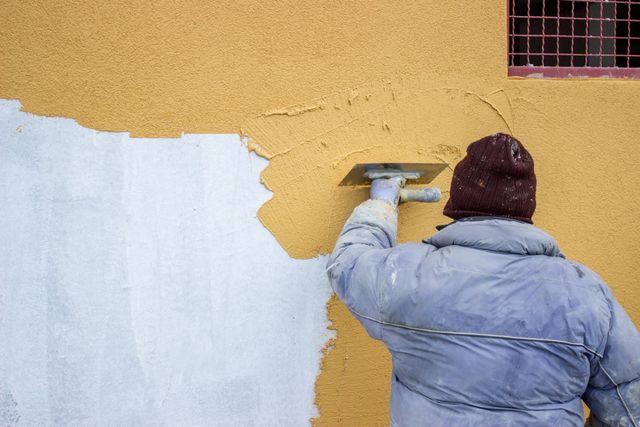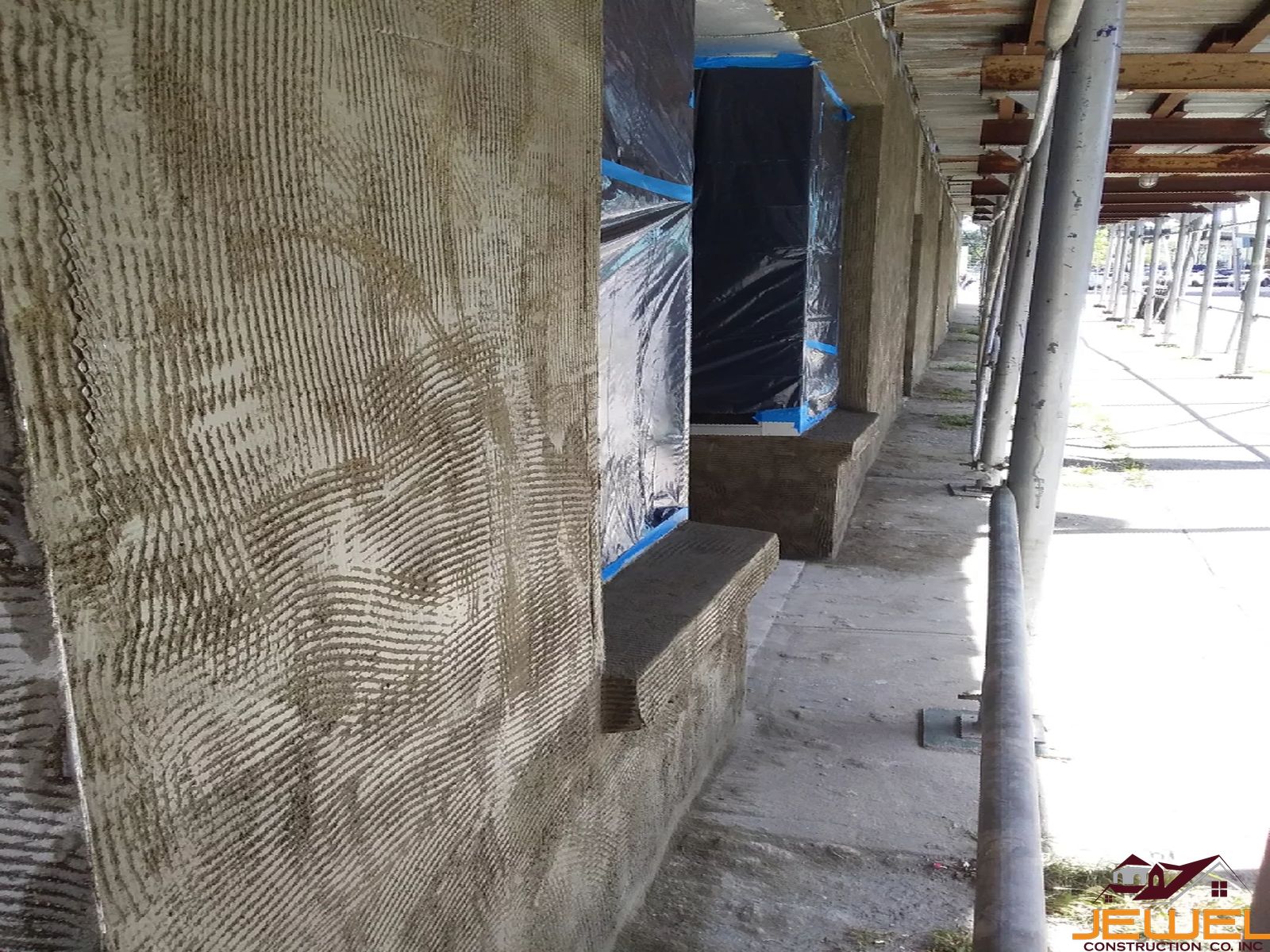What to Try to find in a Highly-Rated Stucco Contractor for Your Building
What to Try to find in a Highly-Rated Stucco Contractor for Your Building
Blog Article
Discovering the Convenience of Stucco in Modern Design
Stucco has actually long been identified for its aesthetic appeal and flexibility, yet its role in contemporary architecture warrants a more detailed examination. This product, historically considerable in various architectural activities, currently offers as a flexible option that improves both the practical and visual aspects of contemporary structures. By discovering its ingenious applications, from striking facades to energy-efficient layouts, one can value exactly how stucco is redefining the limits of building expression. This conversation will discover not just its transformative possibility but additionally the difficulties it deals with in a developing market.
Historical Relevance of Stucco
The historical relevance of stucco is extensive, as it has played an essential function in building practices across numerous societies for centuries. Coming from old human beings, stucco was used by the Egyptians and Greeks as a sturdy and versatile finish for both interior and outside surfaces. Its versatility to various environments and capacity to resemble extra expensive products made it a preferred choice.
In the Roman period, stucco came to be a primary attractive aspect, used thoroughly in public buildings, rental properties, and holy places. The Romans refined the application strategies, enabling intricate layouts and alleviation sculptures. Throughout the Renaissance, stucco experienced a revival, especially in Italy, where it was utilized in ornamental information and sophisticated facades, showcasing the creativity of the period.

Modern Applications in Layout
Stucco has actually found restored relevance in modern architecture due to its convenience and aesthetic allure (stucco contractor). This standard product is progressively made use of in modern design, linking the gap in between modern-day and classic visual appeals. Developers and engineers value stucco for its versatility, enabling it to be used in various designs-- from minimal structures to clarify Mediterranean styles
In residential jobs, stucco offers a tidy, smooth coating that improves the visual communication of facades. Its capacity to satisfy various shapes and surfaces makes it an ideal choice for both new buildings and improvement tasks. Additionally, stucco's sturdiness and reduced maintenance requirements add to its growing popularity in urban settings, where long-lasting materials are necessary.
Business applications have actually additionally embraced stucco, with lots of companies going with this material to produce welcoming and distinctive store fronts. The use of stucco in public buildings, such as schools and recreation center, showcases its possibility for developing visually attractive settings while supplying exceptional insulation residential or commercial properties.
Color and Appearance Advancements
Discovering color and appearance advancements in stucco has actually opened brand-new opportunities for developers and designers, improving the product's visual influence in contemporary building and construction. Recent innovations in pigment technology have permitted a wider spectrum of shades, making it possible for designers to create striking exteriors that incorporate seamlessly with their surroundings or attract attention as vibrant building declarations. This flexibility in color selection uses architects the ability to evoke specific emotional responses and harmonize with local appearances.
Texture advancements have actually likewise changed stucco applications. Techniques such as shoveling, spraying, and marking have actually brought about diverse surface more finishes, ranging from smooth and fine-tuned to tough and responsive. These variants not just add to the building's character yet likewise play a crucial role in light interaction, enhancing the visual deepness and dimensionality of surface areas.
In addition, the introduction of artificial stucco choices has actually increased layout opportunities, supplying boosted longevity and weather condition resistance while keeping visual charm. As architects remain to try out ingenious shade combinations and textured finishes, stucco continues to be a crucial element in modern design, showcasing the product's versatility and classic relevance in contemporary design.
Sustainability and Power Performance
Innovations in color and structure have not just boosted the aesthetic allure of stucco however additionally led the way for greater concentrate on sustainability and energy performance in modern architecture. As ecological problems come to be progressively noticeable, the building and construction industry is transforming its attention to materials that add positively to environmental balance.
Stucco, made up mostly of natural products such as concrete, sand, and lime, provides a lasting alternative to more resource-intensive building products. Its long life and longevity decrease the requirement for constant replacements, thereby decreasing waste and source intake with time. Furthermore, contemporary stucco formulas typically consist of energy-efficient additives that improve insulation properties, reducing home heating and cooling prices for buildings.
The reflective qualities of stucco can additionally be engineered to reduce warm absorption, adding to cooler indoor environments and less reliance on synthetic climate control systems. By promoting power preservation and reducing the carbon impact of structures, stucco lines up with the principles of lasting design. As builders and architects adopt innovative strategies and green practices, stucco stands out as a accountable and versatile selection in contemporary design.

Study of Stucco Projects
The versatility of stucco as a structure product is exemplified in numerous successful architectural projects that highlight its aesthetic and functional advantages. One remarkable example is the improvement of the historical Casa de la Guerra in Santa Barbara, The Golden State. The use of stucco not just protected the building's Spanish Colonial Revival design but additionally boosted its sturdiness and weather resistance, ensuring long life Clicking Here while keeping building honesty.
An additional compelling case is the modern domestic job, the Cactus House in Scottsdale, Arizona. stucco contractor. This striking home attributes a smooth stucco coating that balances with the bordering desert landscape. The stucco's light color reflects warmth, contributing to power effectiveness, while site web the distinctive surface areas include visual passion
In Addition, the Kings Cross redevelopment in London showcases the flexibility of stucco in urban setups. The application of stucco on modern mixed-use structures creates a natural visual that values historic context while embracing modern design concepts.
These situation researches show exactly how stucco can offer various building objectives, from preservation and energy performance to aesthetic enhancement, making it a functional option in modern-day style.
Conclusion
 In final thought, stucco's historical significance and contemporary adaptability make it a useful material in contemporary design. As shown through various situation studies, stucco continues to play an essential function in shaping the architectural landscape of the modern age.
In final thought, stucco's historical significance and contemporary adaptability make it a useful material in contemporary design. As shown through various situation studies, stucco continues to play an essential function in shaping the architectural landscape of the modern age.
In final thought, stucco's historical importance and modern flexibility make it a beneficial material in modern architecture.
Report this page